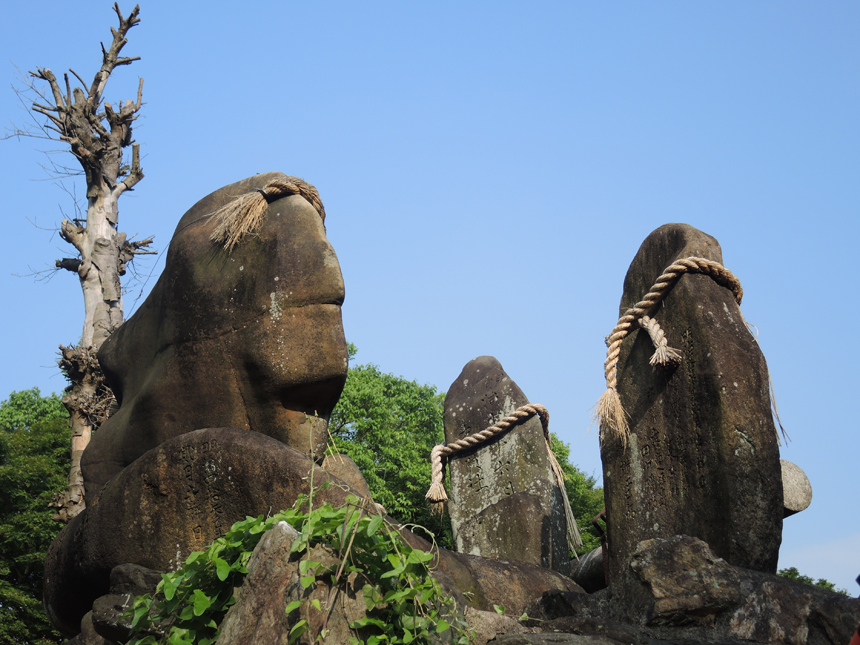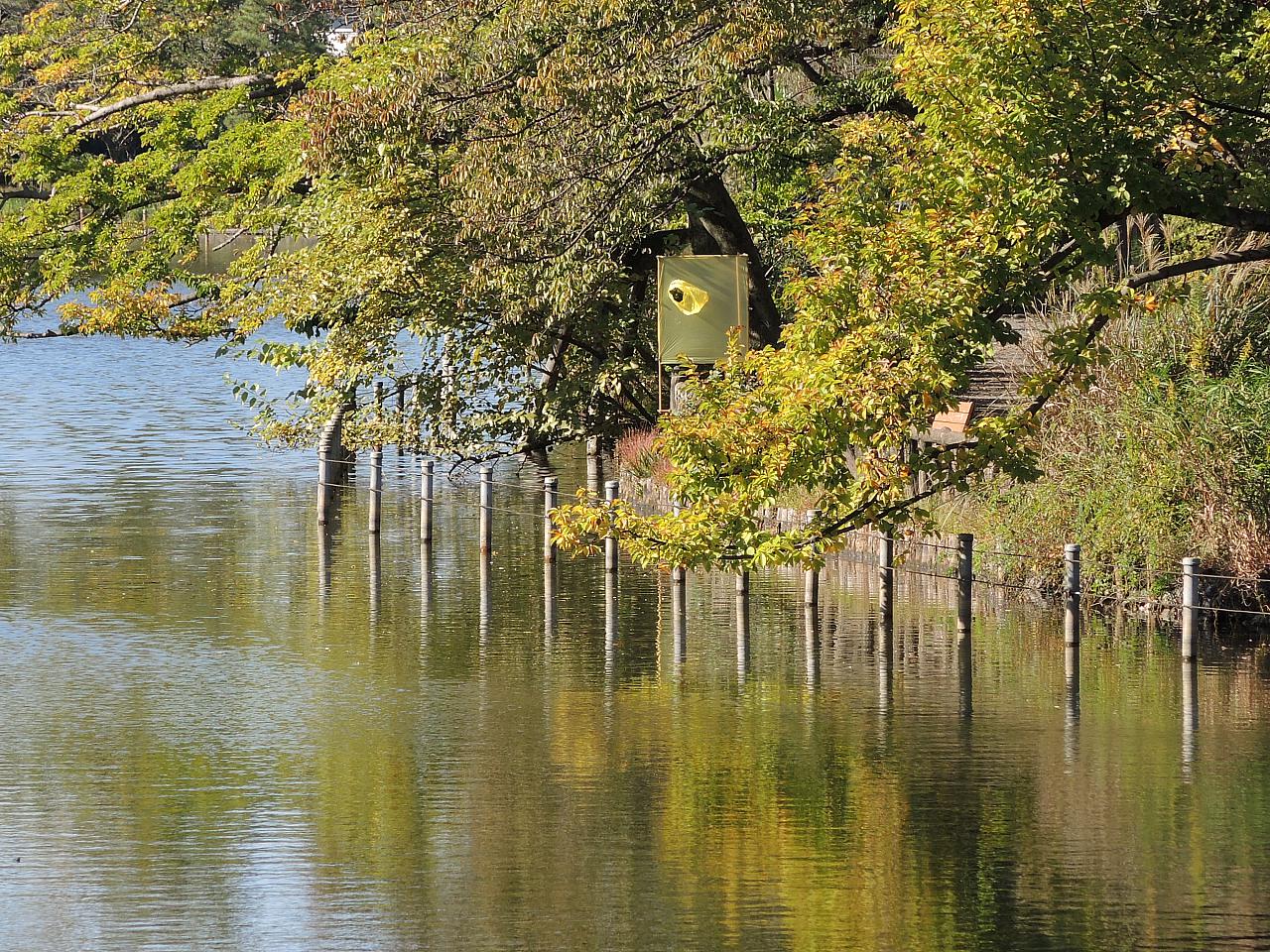SYNOPSIS
ORIENTATION AS GARDENING – Non-anthropocentric models about subjectivity, responsibility, and the care of the self

Fushimi Inari-Taisha, Kyoto, 2015
How can one understand orientation at the beginning of the 21st century? As essential common ground of its manifold elements, ORIENTATION AS GARDENING carries out a questioning of dualistic paradigms as they have been developed by, above all, the history of western insight. While the development of knowledge, orientation, an ethical Being-In-The-World was dominated for centuries by constructed dichotomies, historiography directed through its secession itself (be it Human/Nature, Subject/Object, Own/Other), it is only recently that manifold approaches and proposals for alternative subject constellations and sustainable compositional systems have developed in the context of western academia. Sustainability is thereby primarily understood as an ethical concept, as a new, unpresumptuous, human responsibility. ORIENTATION AS GARDENING joins this aspiration towards self-monitoring as an alternative to rationalistic insight-ambition. The practices that we follow – along a figure reactivated by Michel Foucault – feed into that which the Greeks would call “care of the self,” “take care of your self.”
With an extended term of experience, orienting itself methodically along a “phenomenology of experience”, occidental-western thinking is modified in our project, as well as in its regard to its hitherto categorical self-understanding. Asian thought especially has elaborated fundamental philosophies of experience; of interest to us is above all Taoist thinking as well as the specific Japanese approach, thinking the subject, as with Nishida Kitaro for example. Their subjects are created out of different, complex, and manifold relations to nature and fellow human beings. Flexibility, mobility and destabilization are central characteristics for their human “I” to refer to the “Other” – contrary to the European term of a subject neither fixed nor individual but dependent upon the whole and upon relationships with the Other.
Beside an intercultural philosophical reading we arrange three concrete historical systems of composition (gardening as composition) and read them together, on one meta level of “care of the self”: the Sakuteiki, an 11th century Japanese gardening manual, the Epicurean School ca. 300 BC and the cosmological art- philosophy of the Chinese painter Shitao from the 17th century.
What’s new about our concept in this context is the intercultural connection that takes place on different levels – a matrix of orientation. Not only are the three historical systems and theories of composition of Sakuteiki, Shitao, and Epicur connected amongst each other, they are also confronted with phenomenological theories and current approaches of New/ Vital Materialism, Plant Thinking or Object Oriented Philosophy/ Ontology.
ORIENTATION AS GARDENING thinks of the term of orientation more as a transformative configuration (gardening) than a fixed construct. Orientation becomes a conscious project of searching, an intercultural emigrational movement between ancient Greek discourses and practices, Asian thinking of alteration and modern or contemporary philosophy. Therein lies the question: how can one appropriate concepts without bereaving them of their primal content, without annihilating their contexts of meaning? “Gardening” as used in the title of the project refers to an active, diligent forming of these connections of experience.
The Assemblage Board with its experimental approaches, developed in the project, will offer a central instrument in order to exemplify our collected and developed thought models and systems of composition. The Assemblage Board is an abstract garden in which “Garden” is seen in its advanced sense from the human system of composition. It orientates itself on the living- and learning- community of the Epicurean School – as knowledge-intermediating as well as therein balanced space for stimulation for a self-determined lifestyle at the height of its time – as well as on Shitao’s endeavor of wrestling the clearness and connection of ones own thought and artistic accomplishment onto a universal/cosmological framework; it also translates the strict choreography of Sakuteiki, its spatial thinking, mediation, and requirements into a “Now”. In other words, the board links and transforms the Asian elementary concept of mutual conditionality and space-allocations of action (performance, viewing-space, contemplation, work, utility flows with contemporary analysis of these elements: where and how does which actor enter the game ideally, how/why must knowledge be stored, at which spot is it most accessible, which elements are unmoved positively complementary, which complement each other but also bother each other when they get too close? These correlations are on the side of the planned performances on the board, they refer to the immanent performance character of “Gardening” as composition, the systematically thought- through arrays that are conducted in the frame of ORIENTATION AS GARDENING.
THESES
ORIENTATION AS GARDENING aims to integrate, to acquire a Re-Orientation, that runs through and across bodies, whether human or non-human. ORIENTATION AS GARDENING wants to create an estrangement, doing so in detecting a fuller range of the nonhuman powers circulating around and within human beings. Our project is not about posting a smooth harmony, but a different focus on our environment (Um-Welt). To be able to navigate through that complex system of terms, discourses and systems we designed for ORIENTATION AS GARDENING we originated three theses we will work along:
Thesis 1:
Holistic concept is sustainability is ethics. With this statement we aim for a networked philosophical thinking as well as artistic strategies. We associate these terms with ethics that are shaped by know-how, seeing-techniques, and the ability to involve oneself. Their performance or conversion is interaction and translation. We imagine the 21st century as a threshold of a paradigm change; away from ideological, dualistically arranged scoring systems over to frameworks of reference that don’t operate on such prejudices. We see many approaches of wholehearted recognition, mediation, and translation – between scientific disciplines, between theories, practices, between cultural notions, between biotic and abiotic entities. In the project, this translation comprises the recollecting of holistic systems of composition as tools for a transition phase – the transition from one condition of order to another. Translation becomes the working method in which theoretical and artistic transformations determine one another, influence and test one another reciprocally. The composition of the self, in a theoretical as well as artistic sense, should be determined by a globular causality. Artistic work can lift this transformation onto an extended, multidimensional level, can exemplify purely theoretical thought, and literally give it a body.Thesis 2:
In the 21st century, we want to think of the antique figure of thought of Care of the Self – re-developed by Foucault – as a care of sustainability, and, in doing so, in the aforementioned sense of ethical sustainability. This means that the Care of the Self isn’t read as the exclusive matter of the subject, and it isn’t understood here as practice of a purely humanist-social self-test. Sustainability, corresponding with non-anthropocentric approaches, ideally reflects on all participating positions respectively – be they human, animal, plant, or thing. Without leveling them in a romantic gesture, i.e., “humanizing” them, nor to subjugate them to a hierarchy. The art of acknowledgement lies in the internalization of a non- overbearing behavior. This also means acceptance of differences or the insight of not being able to understand everything. Artistic practice is especially suited for this challenge, as it is not coercively bound to one exclusively intellectual understanding but rather in its aesthetic experience, which it contains and brings forth; it can open up other spaces of thought and experience.Thesis 3:
This instigated disintegration of a traditional “self-centeredness” with its henceforth inevitably resulting dichotomies eventually leads us to not only think of an extended subject term, but also to experience it and to test it according to this experience. We share the notions that self-awareness does not need to be rooted in the “central position of mankind”; we rather try to think humans into their surroundings, their environment – as well as in consideration of contemporary technologies. Discourse can influence practice; altered practices can continue to bring forth new discourses and vice versa. The recently newly and visibly admitted respect for nature as model for technological productions does not, according to us, randomly coincide with the virulent questioning of the subject/object dichotomy.In our “experience tests” we would also like to pursue the question as to whether it is possible for us, as heirs of modernisms, to leave dichotomous thought and action. Which intercultural and non-anthropocentric strategies would be necessary – and internalized differently than only through pure intellectual cognition – in order to take effect? How can the effect of the reflexive (aesthetic) experience differ from that of a theoretical pursuit of knowledge especially in regard to a possible “care of the self”? How can artistic activity renew the moment of transformation, and take its reintroduction in a different direction?

Day2 – Board 2
Tokyo, November 2016
Tokyo, November 2016